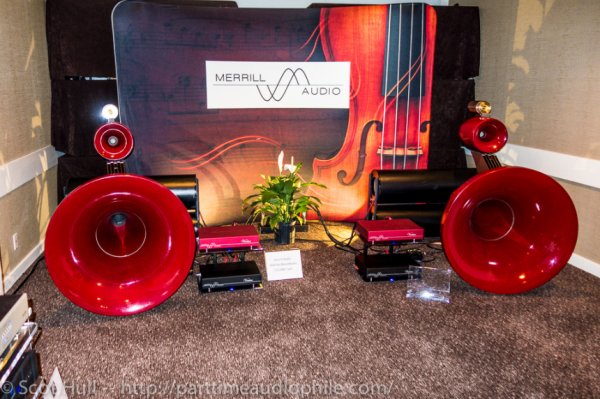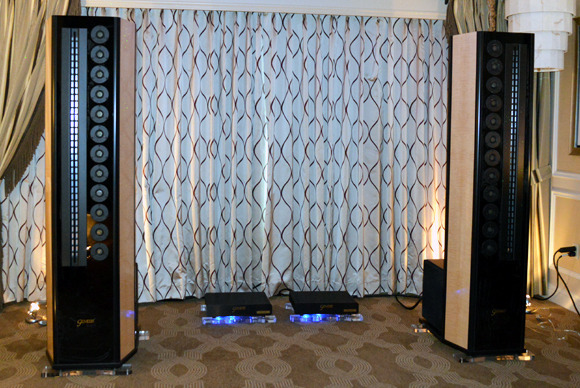Jbl 4367
- Thread starter dallasjustice
- Start date
You are using an out of date browser. It may not display this or other websites correctly.
You should upgrade or use an alternative browser.
You should upgrade or use an alternative browser.
Class D is THE perfect topology for a high efficiency speaker. I can set max volume and put my ear up to the horn throat. When I do that I hear infinite nothingness. Why don't you agree?
Not enough coloration for some.
Not enough coloration for some.
I color with a target curve line. It's pretty and inexpensive.
can't imagine Class D amps for this speaker - are you going to try other topologies?
Have you heard Devialet? Lovely warm sonic signature like a Class A amp has but with the control of a Class D.
I color with a target curve line. It's pretty and inexpensive.
Well the days of folks frowning upon class D will be short lived. I remember how upset the same guys were when flat screen LCD and plasma TV's came out. I wonder how many of them still have old tube CRT TV's in their livingroom?
Technology
Audio playback, especially loudspeakers, is not the same as other tech. Technological improvements in music playback are almost always very subtle and gradual. There are amps designed 20 years ago which can hang with the best of today's amps. IMO, music playback enthusiasts are so accustomed to the slow pace of improvement they completely forget that science and sound engineering is at the heart of all music playback. For those folks, playback is its own artform.
With regard to speakers like the JBL 4367, there are at least two technological advances which greatly contribute to the wonderful music one hears from the big uglies. I've already talked about the special compression driver. There's nothing like it today. The HF I hear are so pure and silky smooth. This character never varies with dynamics or overall volume.
The second technological advance is the waveguide design. There's an AES paper from 2010 written by Voishvillo which demonstrates how Finite Element Analysis and other algorithms make it possible to design a waveguide in a computer and be able to very accurately predict the waveguide's off axis performance. This is a huge advantage to designing waveguide speakers.
The science and math behind both of the advances is not trivial and were many years in the making. Some audio companies release a product and claim they have been working on it for years with no real proof. It's a common marketing scheme. In the case of Harman, the work that went into the new JBL designs WAS many years in the making and can easily be traced with real science published in the accepted scientific community.
The final result is a speaker which may look outdated and clumsy but sounds like nothing else. I love these ugly speakers!!
Lately I've been thinking generally about technology. Technological improvements are almost always rapid and significant such that anyone can see their benefit. I know the first time I saw an HDTV demo I knew that was a big improvement. There wasn't any question about it.Well the days of folks frowning upon class D will be short lived. I remember how upset the same guys were when flat screen LCD and plasma TV's came out. I wonder how many of them still have old tube CRT TV's in their livingroom?
Audio playback, especially loudspeakers, is not the same as other tech. Technological improvements in music playback are almost always very subtle and gradual. There are amps designed 20 years ago which can hang with the best of today's amps. IMO, music playback enthusiasts are so accustomed to the slow pace of improvement they completely forget that science and sound engineering is at the heart of all music playback. For those folks, playback is its own artform.
With regard to speakers like the JBL 4367, there are at least two technological advances which greatly contribute to the wonderful music one hears from the big uglies. I've already talked about the special compression driver. There's nothing like it today. The HF I hear are so pure and silky smooth. This character never varies with dynamics or overall volume.
The second technological advance is the waveguide design. There's an AES paper from 2010 written by Voishvillo which demonstrates how Finite Element Analysis and other algorithms make it possible to design a waveguide in a computer and be able to very accurately predict the waveguide's off axis performance. This is a huge advantage to designing waveguide speakers.
The science and math behind both of the advances is not trivial and were many years in the making. Some audio companies release a product and claim they have been working on it for years with no real proof. It's a common marketing scheme. In the case of Harman, the work that went into the new JBL designs WAS many years in the making and can easily be traced with real science published in the accepted scientific community.
The final result is a speaker which may look outdated and clumsy but sounds like nothing else. I love these ugly speakers!!
Well the days of folks frowning upon class D will be short lived. I remember how upset the same guys were when flat screen LCD and plasma TV's came out. I wonder how many of them still have old tube CRT TV's in their livingroom?
More insults despite the fact the first sentence is at least 4 years too late.
Class D is THE perfect topology for a high efficiency speaker. I can set max volume and put my ear up to the horn throat. When I do that I hear infinite nothingness. Why don't you agree?
Digital amps with high negative feedback have the highest distortion at low output. Since you're only using a couple watts, how is that optimal. Try a pair of First Watt amps and you'll see that the other way is better.
With regard to speakers like the JBL 4367, there are at least two technological advances which greatly contribute to the wonderful music one hears from the big uglies. I've already talked about the special compression driver. There's nothing like it today. The HF I hear are so pure and silky smooth. This character never varies with dynamics or overall volume.
Talking of driver developments that have taken a long time to reach market, ATC's new tweeter was 6 years in development. It's a dual suspension design with no ferrofluid and a very powerful magnet (2.0T). http://atcloudspeakers.co.uk/2015/06/. Sounds amazing, though of course I am biased.
I would love to hear the JBLs. Opportunities are few and far between. Hopefully you will still have them when I come to Dallas for EXPO 2016. And hopefully there will be another good show we can check out too! I need another Lone Star
Hmmm. I took a look at their web site. I don't see that good of distortion numbers there. The "F6" amplifier for example has 0.05% distortion at 1 watt. Here is the Mark Levinson 53:Digital amps with high negative feedback have the highest distortion at low output. Since you're only using a couple watts, how is that optimal. Try a pair of First Watt amps and you'll see that the other way is better.

At 1 watt, my eyeball says THD+N figure of 0.015% or three times lower than the First Watt F6 amplifier. The F6 is also rated at just 25 watts versus 500 watts for the 53.
Only a couple of their amps, the F5/F3 have 0.01% distortion which is not all that much lower than the ML. The rest are all worse.
By using a quiet class D amp on high efficiency speakers, I'm in pretty good company.
View attachment 25618View attachment 25619
I don't have an opinion on class ? amps. A lateral move if you ask me.
I just wanted to borrow your phrase when appropriate. I do agree Gary is "good company."
More insults despite the fact the first sentence is at least 4 years too late.
Where's the insults? I was just pointing out some facts about skeptics of flat screen TV's about 15 years ago and it reminds me what a lot of people have to say about class D today. But your post is a great example of one. I support innovation. The problem with some class D like the Mola Mola Kaluga is it's too good. So now to take things up a notch, things have to be backed down a few notches and coloration's must be added to satisfy many. Bruno's quite stubbornly against it, but other's are realizing it's the only way to satisfy some.
Last edited:
Talking of driver developments that have taken a long time to reach market, ATC's new tweeter was 6 years in development. It's a dual suspension design with no ferrofluid and a very powerful magnet (2.0T). http://atcloudspeakers.co.uk/2015/06/. Sounds amazing, though of course I am biased.
I would love to hear the JBLs. Opportunities are few and far between. Hopefully you will still have them when I come to Dallas for EXPO 2016. And hopefully there will be another good show we can check out too! I need another Lone Star
About time they came out with their own tweeter. I wonder if they are going to sell it to 3rd parties?
Nyal, you are welcome here anytime. I loved hanging out with you, Amir and Scotty. As we ate, I was being constantly besieged with Amir's interesting and continuous conversation. I almost forgot you were there. Every 15 minutes or so, you would suddenly interject edgewise; oh yeah Nyal's sitting at the table too. 
Obviously, I can't make any promises about which speakers will be in my room the next time you are here but there WILL be lonestar beer.
Obviously, I can't make any promises about which speakers will be in my room the next time you are here but there WILL be lonestar beer.
Talking of driver developments that have taken a long time to reach market, ATC's new tweeter was 6 years in development. It's a dual suspension design with no ferrofluid and a very powerful magnet (2.0T). http://atcloudspeakers.co.uk/2015/06/. Sounds amazing, though of course I am biased.
I would love to hear the JBLs. Opportunities are few and far between. Hopefully you will still have them when I come to Dallas for EXPO 2016. And hopefully there will be another good show we can check out too! I need another Lone Star
About time they came out with their own tweeter. I wonder if they are going to sell it to 3rd parties?
No, I don't think so, at least not the S-Spec version. They don't sell any S-Spec stuff to third parties.
It's interesting to me because I am very into speaker off axis related stuff, and have written many blog articles about it: http://www.acousticfrontiers.com/category/blog/acoustics/speaker-directivity/
Yet reading between the lines Harman residential care little seemingly about driver related things, all the recent innovations having come from JBL PRO side. All the hoo-haa was about smoothly varying off axis and all that Toole stuff (which I agree to BTW). I just think they did not emphasize the importance of good transducer engineering. ATC speakers, for all the things they might "improve", sound amazing to me, and so many pros and musicians agree. In reality like most things speaker engineering is a balancing act, not just about one thing. So now I subscribe to a school of thought that is: a little off axis wiggle is not that important if it is band limited. I've kind of had to re-evaluate my "off axis measurements are everything" stance, because that's blatantly not everything. Otherwise I wouldn't like ATC as much as I do [although they are quite to very good off axis they are not like the invisible crossover point situation you will get with a waveguided tweeter transitioning to an appropriately sized woofer off axis, like YG or these JBLs).
Another interesting thing that I have really not seen explored / marketed very much at all is the performance of drivers with "large signals" (as in real music played at normal SPLs). It's all 1W at 1M stuff. I very much value speakers that sound consistent at quiet AND loud listening levels. Another random but interesting point is how can a speaker with 85dB sensitivity sound so very dynamic? It's all in the linearity of performance over large input voltage ranges. I am not a speaker transducer engineer but this is fascinating stuff to me. I think ATCs sound dynamic due to the underhung and very powerful magnets used. The voice coil is always in an area of consistent magnetic flux.
I think later in life I will be a speaker transducer engineer. Acoustics is fascinating but transducer engineering seems like another level of amazingness.
Hmmm. I took a look at their web site. I don't see that good of distortion numbers there. The "F6" amplifier for example has 0.05% distortion at 1 watt. Here is the Mark Levinson 53:

At 1 watt, my eyeball says THD+N figure of 0.015% or three times lower than the First Watt F6 amplifier. The F6 is also rated at just 25 watts versus 500 watts for the 53.
Only a couple of their amps, the F5/F3 have 0.01% distortion which is not all that much lower than the ML. The rest are all worse.
Yeah the Hypex NC500 is quite poor as well

Nyal, you are welcome here anytime. I loved hanging out with you, Amir and Scotty. As we ate, I was being constantly besieged with Amir's interesting and continuous conversation. I almost forgot you were there. Every 15 minutes or so, you would suddenly interject edgewise; oh yeah Nyal's sitting at the table too.
Obviously, I can't make any promises about which speakers will be in my room the next time you are here but there WILL be lonestar beer.
Yes, he does talk A LOT
BTW Songkick is good but none of the bands I like tour. Maybe I like weird music.
No, I don't think so, at least not the S-Spec version. They don't sell any S-Spec stuff to third parties.
It's interesting to me because I am very into speaker off axis related stuff, and have written many blog articles about it: http://www.acousticfrontiers.com/category/blog/acoustics/speaker-directivity/
Yet reading between the lines Harman residential care little seemingly about driver related things, all the recent innovations having come from JBL PRO side. All the hoo-haa was about smoothly varying off axis and all that Toole stuff (which I agree to BTW). I just think they did not emphasize the importance of good transducer engineering. ATC speakers, for all the things they might "improve", sound amazing to me, and so many pros and musicians agree. In reality like most things speaker engineering is a balancing act, not just about one thing. So now I subscribe to a school of thought that is: a little off axis wiggle is not that important if it is band limited. I've kind of had to re-evaluate my "off axis measurements are everything" stance, because that's blatantly not everything. Otherwise I wouldn't like ATC as much as I do [although they are quite to very good off axis they are not like the invisible crossover point situation you will get with a waveguided tweeter transitioning to an appropriately sized woofer off axis, like YG or these JBLs).
Another interesting thing that I have really not seen explored / marketed very much at all is the performance of drivers with "large signals" (as in real music played at normal SPLs). It's all 1W at 1M stuff. I very much value speakers that sound consistent at quiet AND loud listening levels. Another random but interesting point is how can a speaker with 85dB sensitivity sound so very dynamic? It's all in the linearity of performance over large input voltage ranges. I am not a speaker transducer engineer but this is fascinating stuff to me. I think ATCs sound dynamic due to the underhung and very powerful magnets used. The voice coil is always in an area of consistent magnetic flux.
I think later in life I will be a speaker transducer engineer. Acoustics is fascinating but transducer engineering seems like another level of amazingness.
Yeah I've always liked their drivers. I built a speaker with this masterpiece 18 years ago. Still one of the best mids ever made if you match it to the right mid woofer. The massive magnets and underhung voice coils are why they are so dynamic. They make serious drivers made for serious performance. Much like the Volt, Audio Technology, and Scan-Speak Illuminator units.
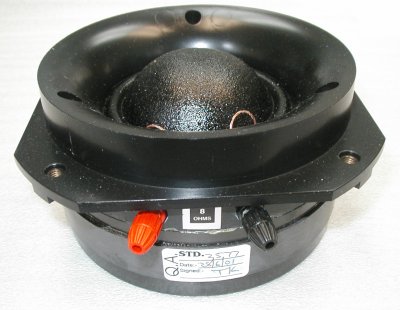
Another high performance driver here:
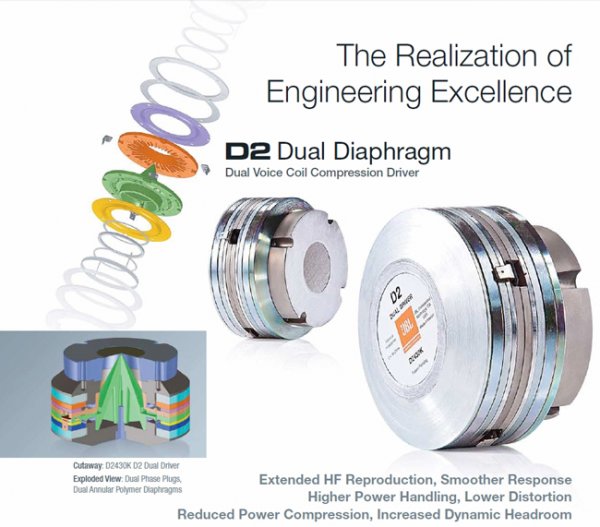
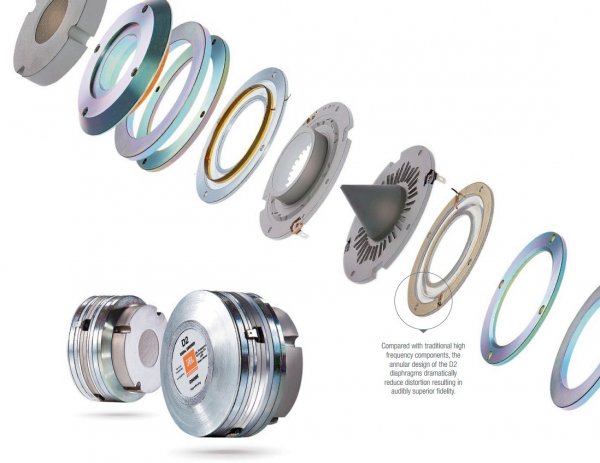
Last edited:
Similar threads
- Replies
- 1
- Views
- 5K
- Replies
- 73
- Views
- 28K
- Replies
- 189
- Views
- 46K
- Replies
- 2
- Views
- 3K
| Steve Williams Site Founder | Site Owner | Administrator | Ron Resnick Site Owner | Administrator | Julian (The Fixer) Website Build | Marketing Managersing |


